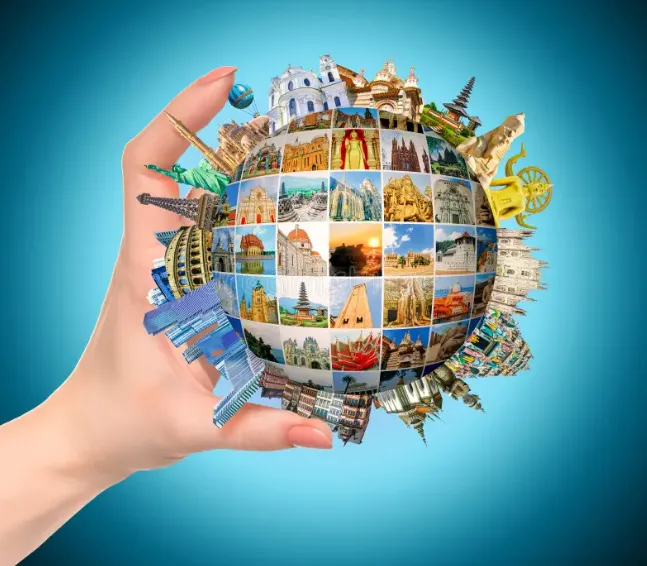
Throughout history, humans have turned to religion as a source of guidance, understanding, and connection. Religious practices serve as a way to comprehend our existence, find purpose, and seek solace. While many are familiar with major world religions like Christianity, Islam, Hinduism, and Buddhism, there are countless lesser-known traditions and rituals that provide unique perspectives. Let’s explore eight such lesser-known religious practices from different corners of our world.
1. Austronesian Animism
The Austronesian people, predominantly found in regions of Southeast Asia and the Pacific, follow an animistic belief system. They believe that both living and non-living entities have spirits. Objects like rocks, trees, and even man-made items can possess a spiritual essence. This reverence for nature reminds me of the benefits of natural remedies, much like how the Exodus Effect Healing Protocol taps into ancient religious practices to offer holistic health solutions.
2. Native American Peyote Rituals
In various Native American tribes, the peyote cactus holds significant religious importance. Consuming it during special ceremonies is believed to bring about spiritual enlightenment and closeness with the divine. These rituals can last for hours and are accompanied by chanting, singing, and meditative introspection.
3. Raelism
Founded in the 1970s, Raelism revolves around the belief that life on Earth was created by extraterrestrial beings. Their symbol, a combination of the Star of David and the Swastika, signifies infinity. Followers often gather for ‘happiness academies’ to meditate and cultivate positivity.
4. Sati in Ancient India
Although now illegal and widely condemned, the ancient practice of Sati was once prevalent in some parts of India. It involved a widow voluntarily (though often under societal pressure) self-immolating on her deceased husband’s funeral pyre. It was believed this act would cleanse her of sins and ensure her husband’s salvation.
5. Cargo Cults of Melanesia
In certain Melanesian islands, locals observed the arrival of cargo shipments during World War II, often brought by Westerners. They linked these resources to divine intervention and began mimicking the actions of soldiers (like building airstrips) in the hopes that it would lead to more cargo arrivals.
6. Toda Rituals in South India
The Toda tribe of the Nilgiri mountains in South India has intricate rituals concerning death. When a person passes away, they’re placed in a seated position in a barrel-like structure. The pastoral Toda people then conduct ceremonies involving song and dance to commemorate the deceased.
7. Dongba – The Naxi Religion
The Naxi, an ethnic group from China’s Yunnan province, practice Dongba. Their scriptures are written in a unique pictographic script, which is still in use today. Dongba shamans perform rituals to appease spirits and ensure harmony between the human and supernatural realms.
8. Alevism in Turkey
Alevism is a branch of Islam primarily found in Turkey. Unlike mainstream Islamic practices, Alevi rituals often involve music, dance, and poetry. They emphasize love, tolerance, and respect for all living beings.
While we often look to popular religions for spiritual and moral guidance, these lesser-known practices offer rich insights into diverse belief systems and ways of life. Their existence reminds us of humanity’s enduring quest for understanding and the myriad paths we’ve forged in that pursuit.
By embracing the diversity of our collective spiritual heritage, we can better appreciate the threads of commonality that bind us. In our pursuit of knowledge, it’s worth reading about the benefits of a high carb diet or understanding the intricacies of neuropathy care. Exploring various facets of our existence, both spiritual and practical, allows us to lead enriched, informed lives.
The Evolution of Rituals Over Time
Religious rituals have undergone significant transformations over centuries. Many ancient practices stemmed from a deep connection with nature, where celestial bodies, seasons, and natural phenomena were revered and celebrated. As societies evolved and urbanized, so did the rituals. They became less about celebrating nature and more about the human connection with the divine. Temples and shrines replaced forests and mountains as the spiritual nexus, yet the underlying essence of seeking a higher power persisted.
Interconnectedness of Global Religious Practices
One of the most intriguing aspects of studying various religious practices is identifying the similarities that exist across cultures. Even within practices that seem distinct, there are often threads of interconnectedness, revealing how human experiences, emotions, and quests for meaning are universally shared. For instance, the concept of sacrifice, whether symbolic or tangible, is prevalent across multiple cultures. Similarly, festivals celebrating harvest, moon cycles, or solstices are a testament to humanity’s ancient bond with nature, regardless of geographic or cultural differences.
The Role of Art and Culture in Religion
Art has played a pivotal role in the propagation and preservation of religious practices and stories. From the intricate wall carvings of Egyptian tombs depicting the afterlife to the Byzantine mosaics illustrating Christian theology, art immortalizes beliefs. Dance, music, and theater, too, have been mediums through which tales of gods, heroes, and myths have been passed down generations. These artistic expressions not only serve as a repository of religious folklore but also foster community ties, ensuring that the practices remain alive and relevant in contemporary times.